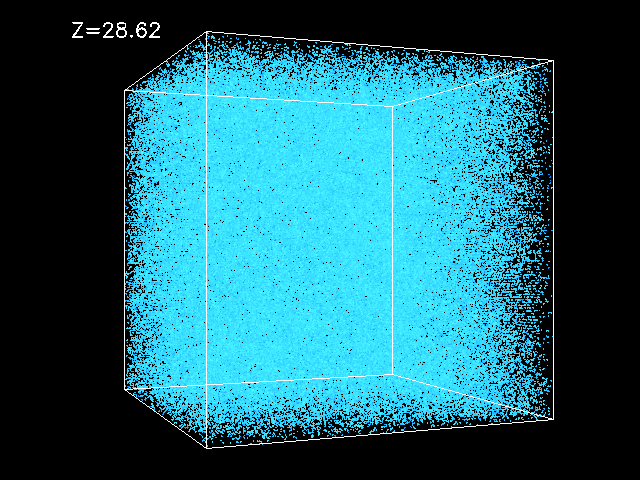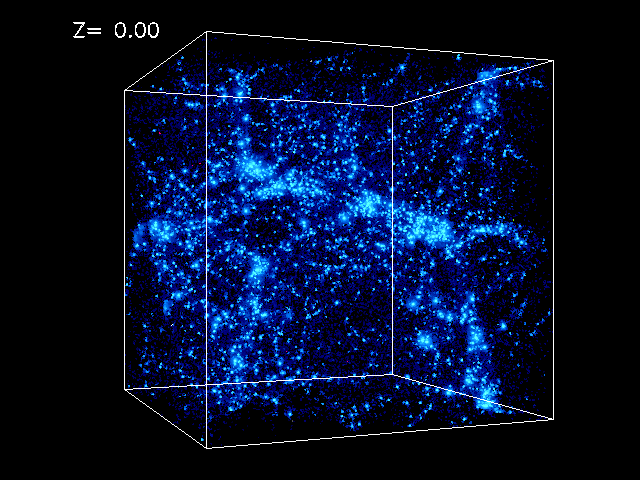-
Posts
2612 -
Joined
-
Days Won
21
Content Type
Profiles
Forums
Events
Everything posted by Ghideon
-
Ok, so the idea is about particle physics. How do you define a particle, radius and space in your idea? Is your definition compatible with quantum physics or are you suggesting something different? Radius, volume, density are not the most usable concepts at the small scales of subatomic particles, how does your model look? Is there a distinction between elementary particles such as electrons or quarks, which have no known internal structure*, versus composite particles such as protons, which do have internal structure? *) https://en.wikipedia.org/wiki/Point_particle
-
A quick comment; a lot more details and math is required since the idea seems to say that Newton and GR is incorrect. Example: As far as I know a star that have run out of fuel may collapse. If for instance the result is a neutron star we have about the same mass in less volume, ok? What is your definition of "space" in this context? Does the star loose a lot of gravity when it turns* into a neutron star, according to your model? How does your idea match observations? There are already mainstream models for this. *) I don't know the correct name for the process
-
Yes that sounds correct. Note that you seems to ask about a static situation but the universe is not: In the past the matter in the quasar was much closer to us. Waves from gravitational events, such as black hole mergers, in the distant quasar may or may not have reached us yet.
-
Interesting idea! But what is the purpose? What would happen if battery just powers a propeller on the boat? And the solar panel+battery could also power a propeller on the submarine, if the submarine is required for other purposes than generating propulsion since boat and submarine is attached through the cable.
-

Help Needed on Science Friendly Software
Ghideon replied to jimmydasaint's topic in Computer Science
I'm by no means an expert in software licensing, but I checked http://molview.org/license and I find no reason to believe there are royalties (Gnu General Public License). -

Gravity is limited to a range extendable with the speed of light c
Ghideon replied to awaterpon's topic in Speculations
So nothing new to add to well-established physics, and idea based on misunderstandings. But misunderstandings and/or lack of knowledge is possible to fix, start by opening a new thread with some relevant question in the cosmology section! I vote "yes". -
It sounds like the idea is not matching what is observed, see https://en.wikipedia.org/wiki/Bullet_Cluster for instance. Observations of colliding galaxy clusters show, as far as I know, that the effects of gravity lensing is not necessarily aligned with the location of baryonic.
-

Help Needed on Science Friendly Software
Ghideon replied to jimmydasaint's topic in Computer Science
I tested Molview just for fun. I took a random compound, Aminoacetic acid, and it produced these two pictures*: *) I selected representation "Van der Waals spheres" and engine "Jmol". -

Help Needed on Science Friendly Software
Ghideon replied to jimmydasaint's topic in Computer Science
Have you sen molview or phet? Maybe build or find molecules you need and take screnshots or export? Note, I haven’t tested myself, I just got the links from a contact http://molview.org/?cid=297 https://phet.colorado.edu/sims/html/molecule-shapes-basics/latest/molecule-shapes-basics_en.html -

Gravity is limited to a range extendable with the speed of light c
Ghideon replied to awaterpon's topic in Speculations
You keep repeating that, even after all the things you have been told in this thread. Speculation: are your ideas based on misunderstanding Big Bang cosmology? You seem to argue as if there are parts of the universe where no gravity waves have ever passed (yet)? If so, then I think that discussion requires a separate thread. -

Gravity is limited to a range extendable with the speed of light c
Ghideon replied to awaterpon's topic in Speculations
Which one? You have presented several revisions, all of them incorrect. Detection of gravity waves, with finite speed c, and hence reaching finite distance in finite time, got a Nobel Prize: https://www.nobelprize.org/prizes/physics/2017/press-release/ So it is considered a well established part of science. Why not try to learn some physics, since you seem genuinely interested in these topics? -

Gravity is limited to a range extendable with the speed of light c
Ghideon replied to awaterpon's topic in Speculations
Again, nothing new. A gravitational wave, as predicted by general relativity and confirmed by observation, is the same speed as the speed of light (c). https://en.wikipedia.org/wiki/Speed_of_gravity Here are the scenarios I see at this time: 1: Keep modifying the equation until it matches observations and gives correct predictions where applicable. The result will be General Relativity*, an already known theory. 2: Keep modifying by adding constraints and adjustments until the equations has no measurable effect and can't be tested. Such changes are trivial to invent and has no scientific value. 3: New theories beyond GR emerge, compatible with GR in areas where GR applies. (Quantum Gravity or similar) Given the progress so far I boldly state that probability for #3 is zero within the scope of this thread. Is there any point of continuing this discussion? *) And other closely related things, I believe it is not necessary to go into extensive details to make a point. -

Gravity is limited to a range extendable with the speed of light c
Ghideon replied to awaterpon's topic in Speculations
Where is the distance r between m and M in the equation above? What new physics are you trying to describe? Why keep providing incorrect equations, when correct* equations already exists? *) "correct" means well tested, matching existing evidence, reliable within their respective area of applicability. -

Gravity is limited to a range extendable with the speed of light c
Ghideon replied to awaterpon's topic in Speculations
Something incorrect, such as negative gravity for small values of T? -

Gravity is limited to a range extendable with the speed of light c
Ghideon replied to awaterpon's topic in Speculations
Did you read my comment on your gravity equation above? You have still not shown anything new that is missing in mainstream physics. You have shown a new equation* for already known concepts and the equation you proposed* seems incorrect. Existing equations matches observations and tests. Your version seems to contradict several things already tested and covered by existing physics. Strange already told you: Adding your proposed [math](1-\frac{ | r'(t) | t}{c( t_{0} +t)} )[/math] would not work well. See gravity in my previous post. *) Side note; I still think it was good that you introduced an equation in the discussion! From a scientific point of view I believe it leads to more fruitful discussions, vague descriptions with zero math are commonly seen in this section of the forum. -
Where?
-

Gravity is limited to a range extendable with the speed of light c
Ghideon replied to awaterpon's topic in Speculations
Good point. Probably the mixing of static and dynamic situations* for both gravity and electromagnetism is the main reason behind the proposals made by OP. I asked you to analyse your proposed equation for gravity but I see no response. So here are some comments. As Swanson pointed out you seem so mix static and dynamic things. Here is Newton: [math]F=G \frac{m_{1} m_{2}}{ r^{2} }[/math] Note: there is no time dependency as far as I can see. Here is your modified version. I have changed into what I think you mean, you have not yet responded to my request to take the changing radius into account. This is a best guess: [math]f()=G \frac{m_{1} m_{2}}{ r^{2}(t) } (1-\frac{ | r'(t) | t}{c( t_{0} +t)} )[/math] Assumptions made by me: Since you introduced radial velocity [math]v[/math], radius [math]r[/math] is not constant. So I assume you mean [math]r[/math] as function of time; [math]r(t)[/math]. [math]r(t)[/math] depends on radial velocity [math]v[/math] so I assume [math]v[/math] is time derivate of [math]r[/math], [math]r'(t)[/math]. You stated that direction of the radial velocity is not important, so I use absolute value [math]| r'(t) |[/math]. I assume [math]T[/math] and [math]t[/math] uses same changing time component so [math]T[/math] is some starting time [math]t_{0}[/math]+ elapsed time [math]t[/math]. Instead of an equation from Newton we now seem to have a differential equation. Questions: Do you see what strange things this equation suggests? Hint: what would happen, according to your math, to two ideal pendulums, started at different times? Do you see how it seems to differ from the predictions in mainstream physics, how it can be tested and how its is most likely going to fail such test? Maybe it is time to start from scratch, asking questions about mainstream physics in an appropriate mainstream section of this forum? *) I remember many years ago when I studied. Static and dynamic mechanics were separate courses, first static then dynamic Newtonian mechanics. -

Gravity is limited to a range extendable with the speed of light c
Ghideon replied to awaterpon's topic in Speculations
What mistake in current physics? Speed of light in vacuum known, tested and included in the mainstream formulas. Lets focus on the modified version of Newtons equations that you have proposed. It is already known that Newton does not take gravitational waves, invariant speed of light in vacuum, time dilation and other things that Einsteins relativity handles (SR, GR). There are situations where Newton mechanics applies and situations where Newton mechanics does not apply. Einstein's equations applies to a broader set of situations* and will look like Newton for the situations where Newton applies. Take a look at the https://en.wikipedia.org/wiki/Lorentz_factor for instance: [math]\gamma ={\frac {1}{{\sqrt {1-({\frac {v}{c}})^{2}}}}}[/math] Very simply put: for speeds much less than c the factor very close to 1; Newton and Einstein gives same result unless high precision is required. So there is no need for new equations to cover the issues you describe, you just have to know when and where to use the existing equations from mainstream physics. How do we test that your equation predicts gravitational effects better than Newton and Einstein? Have you analysed your suggested equation for gravity and seen it's implications? The way you have introduced c and t seems to imply some really strange behavior if I understand your descriptions. Hint: take a look at the connection between r, v and t in what you have stated so far. Since this is speculation section I'll let you will work out the details *) Higher speeds for instance. There are also situations where more work is needed; As far as I know GR does not work good for the center of black holes for instance. -

Gravity is limited to a range extendable with the speed of light c
Ghideon replied to awaterpon's topic in Speculations
Can you show the math? So far I have seen an equation for your proposed modification of Newtons mechanics. -

Gravity is limited to a range extendable with the speed of light c
Ghideon replied to awaterpon's topic in Speculations
I think that it is already well established knowledge, according to current physics. It does not test the new equation you suggested. -

Gravity is limited to a range extendable with the speed of light c
Ghideon replied to awaterpon's topic in Speculations
Here are some additional questions regarding the predictions of the proposed equation: When does the equation apply? How can it be tested? Since matter does not seem to pop into existence, what is the value of T when testing? We have: Perfect circular motion: [math]v=0[/math], no effect from the added parameters. Speeds [math]v[/math] close to [math]c[/math]: the equation gives incorrect results (while GR predictions matches observations). For [math]v<<c[/math] we know Newton is a good approximation. Example: space missions using gravity assist* seems to work. So, what situations requires the modifications you suggest? I think you would have to show how Keplers laws are affected and how observations matches your equations. One more; since the distance r seems to depend on v and on t, can you write out the equation taking this into account? *) https://en.wikipedia.org/wiki/Gravity_assist -

Michelson Morley experiment is no confirmation of Special Relativity
Ghideon replied to vanholten's topic in Speculations
I did not know of Demjanov so I searched. Results supports Strange's comment: "Physical interpretation of the fringe shift measured on Michelson interferometer in optical media" paper was retracted by the editors of Physics Letters A. www.sciencedirect.com -

Gravity is limited to a range extendable with the speed of light c
Ghideon replied to awaterpon's topic in Speculations
There seems to be several things proposed by your equation: You are using speed to measure relative movement of masses m1 and m2, not velocity. The direction of movement is not important? How is that compatible with Newton where forces, acceleration etc are vectors? Since, according to you, gravity decreases with increasing speed v, regardless of direction, how does that affect orbital motion of planets etc? Note that GR already exists and observations support GR. Your equation seems to predict a different behavior. What mechanism do you suggest to make mass "pop into existence" so your equation can be tested? -

Cosmic filaments and universe expansion
Ghideon replied to Ghideon's topic in Astronomy and Cosmology
I think I found my issue in @StringJunky's reference, co-moving coordinates! Short explanation, I'll try posting a better followup if I understand more details later. Evolution of structures in a 43 million parsecs (or 140 million light years) box, taken from a simulation. Showing two frames; early universe and present epoch: From the above two frames it looks to me like the density on large scales is the same. The same amount of matter in a 140 million light years box in two different configurations. What I have missed is that such models and simulations can use different coordinate systems, the side of the box is not necessarily 140 million light years in proper distance. From the reference: On large scales seen here, gravity cannot compete with the dark energy-driven acceleration and the growth of structures ceases. As the contraction of large-scale structures is halted they expand with the universe and appear "frozen" in our co-moving system of coordinates. -

Gravity is limited to a range extendable with the speed of light c
Ghideon replied to awaterpon's topic in Speculations
Is this the correct equation according to your idea? [math]F=G\frac{ m_{1} m_{2} }{ r^{2} } (1- \frac{vt}{cT} )[/math] Can you provide some more explanations what t and v is? When is t=0 for instance. I'm not sure mass will "come from nowhere", but lets assume it can, just as a test; assuming t=1 and v=1, for short times T, it seems that gravity force is negative: [math]T<\frac{1}{c}, t=1, v=1 \rightarrow (1- \frac{vt}{cT}) <0)[/math] Is that correct?





